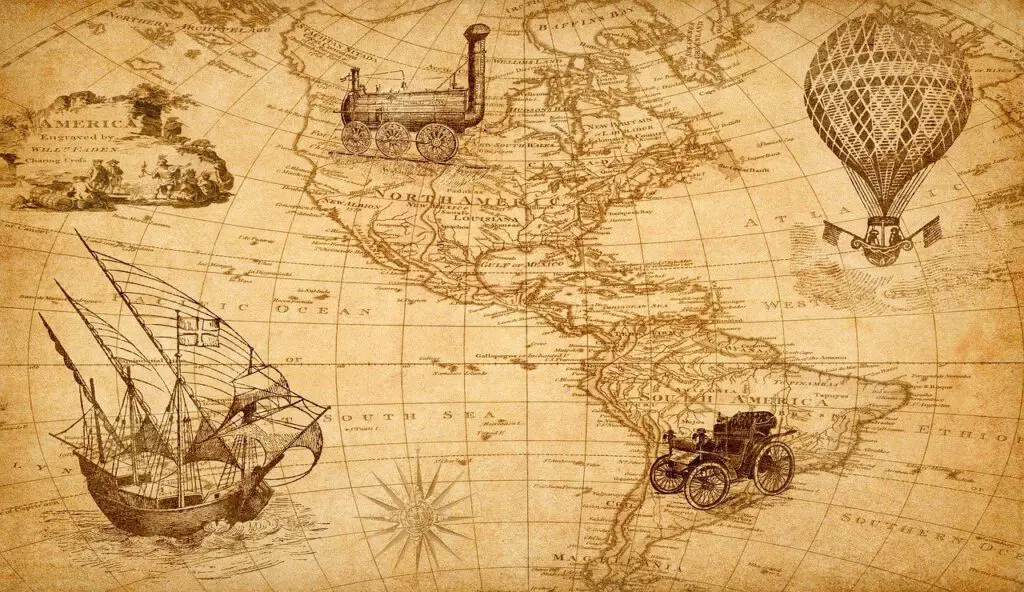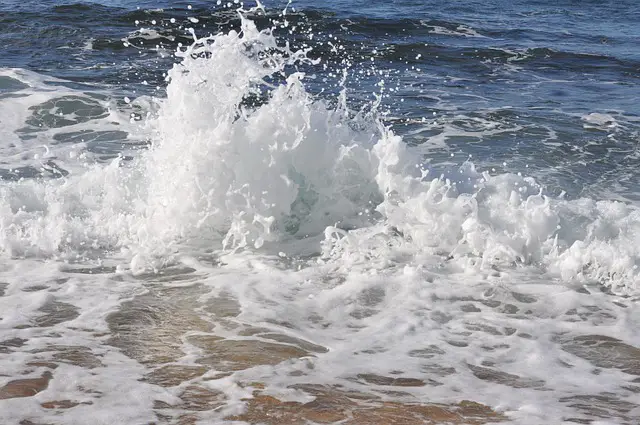Sailors had several reasons to sing while on their ships. Singing was a way to pass the time and lighten the mood during long hours or days of tedium, such as during lengthy voyages. It also helped sailors coordinate efforts without having to shout orders across the deck. The tune of a song could be used as an alarm or a signal to indicate a vessel’s type, heading and speed. Sailors were also very superstitious about singing while on board ship. They avoided bringing songs with negative themes on voyages, believing that bad luck would result if they did so. In the 19th century, it was considered unlucky to sing of funerals or graves at sea.

Ships had many types of songs depending upon the vessel, time period and location. For example, sailors from Caribbean nations often sang calypso music with Caribbean-style beats instead of traditional shanties during the 20th century because these tunes were more appropriate for their lifestyles.
Sailor’s work songs varied by nation and historical era as well as cargo being carried and tasks being performed. Historical narratives tell us that songs were sung as a means of measuring time and coordinating work among sailors on British ships as far back as the 1500s. The following are some common types of songs from different time periods:
Shanty Songs
A shanty was a type of work song originally used by sailors to help coordinate arduous tasks at sea such as hauling ropes, pulling up sails or heaving anchor. These were also called chanties. Singing helped ease the pain and tension that came with long efforts, especially when done in unison by a large number of people. Shanties could be considered the predecessors to modern day club music since they use repetitive beats and call-and-response vocals. Shanties had many different rhythms and styles.
Chantey Songs
A chantey (also called a chanty or chauntie) was a work song, especially popular during the era of commercial sailing ships. Shanties were usually rhythmic a cappella work songs that had simple melodies and specific lyrics set to particular rhythms designed for particular tasks such as hauling ropes, pulling up sails or heaving anchors. Some shanties were sung in time with the motion of waves lapping against the side of the ship, making them an early example of music written specifically to be performed in synchronization with movement. For instance, sailors on British ships in the 1500s used shanties to help coordinate arduous tasks in unison since shouting orders across decks proved ineffective when high winds and rough seas made it difficult to hear. In the 1800s, British sailors sang shanties to help coordinate efforts needed to raise anchors or perform other tasks that required a group effort.
Glee Songs
A glee was similar in function and style to a work song but used for a different purpose. Since it would be awkward and damage the vessel if all hands fell silent while hauling on ropes or furling sails, sailors often worked in pairs or groups of three called “gangs” instead of singing as a full crew. One sailor would sing a line from a song while another sailor or group of sailors responded with the next line. This is why these songs were known as glee club songs since were sung by small groups rather than entire crews.
Chant Songs
A chant is a type of work song that was sung to assist with repetitive or hard tasks. Chants were similar in function to shanties but did not have lyrics set to rhythmic beats since these songs were usually used when the main crew members who would normally be doing this task had been killed in an accident, which meant that less experienced sailors needed time to learn the ropes before they could sing more complex tunes.
The American whaling industry produced many different types of songs during the 1800s, some of which are still sung today by folk singers and enthusiasts of traditional maritime music. These include popular hand-over-hand shanties such as “Haul on Bowline,” “Shenandoah” and “Reuben Ranzo.”
Chanteyman Songs
A chanteyman or chantyman was a sailor who sang shanties to the rest of the crew while working. The term is a combination of two words: chant, which referred to a work song, and man, referring to sailors in general. These songs were all time used as a means of communication between members of different gangs during tasks that required more than one person’s efforts at once such as hauling ropes, pulling up sails or heaving anchor. In most cases, chanteys were sung by individual groups rather than by entire crews so it became necessary for sailors to sing out words like “Ahoy!” and “Yoho!” every now and then to let others in their gang know that they were still “alive” and pulling hard on the ropes. Shanties could be considered the predecessors to modern day club music since they use repetitive beats and call-and-response vocals. Shanties had many different rhythms and styles, some of which were:
Baling Chantey
A baling chantey was a work song sung by sailors while bailing water out of a vessel by hand in preparation for coming into port or when another vessel was passing nearby. These songs often had lyrics about needing to lighten the ship because it is too full (“Light brig, she won’t sail! We need more cargo”) or telling people on shore to get ready for impending bad weather. These songs are also called bailing chants. Baling chanties were sung to coordinate efforts needed to bail water out of a vessel by hand in preparation for coming into port or when another vessel was passing nearby.
Whip-poor-will Shanty Chantey
A whip-poor-will shanty was a work song that referred to all types of whales, which are some of the largest animals on earth. Whip-poor-wills are actually small nocturnal birds commonly found throughout North America but sailors working in dark conditions at night during the 19th century used their calls as code words for various types of whales. For example, “Whip poor Will!” could mean, “There’s a Right Whale off the starboard bow” while “Wake snakes!” meant that orcas had been spotted and were hunting in the area.
Windlass Chantey
A windlass chantey was a work song that referred to windlasses, which are large machines used to pull up anchor or move heavy objects from one point to another on a ship. These songs could also be called capstan chanties since these winding machines were often located near hatches and capstans, which were devices attached to the wheel of a ship used for steering. Windlass chanties were sung when sailors wanted to coordinate their efforts while pulling or pushing against something such as an anchor chain. For example, “Walk-to-jigger!” meant that sailors needed to pull together using a rope tied around a wheel while “Yo heave ho!” meant that replacement sailors were needed to take the places of men who became exhausted.
Hempen Home Chanty
A hempen home chanty was a work song sung during tasks related to making ropes from hemp fibers such as spinning the rope yarn, laying rope mats and twisting strands together into rope. Sailors would often sing chants about how much they disliked working with these types of heavy ropes because they required so much effort to make them or carry around when it was time to raise or lower sails. There is even another type of chantey that refers to a sailor’s dislike for spending long periods at sea without having access to land called a long-voyage chantey.
Summary
Sailing songs were used by sailors to coordinate their efforts when hauling ropes, pulling up sails or heaving anchor during tasks that required more than one person’s efforts at once such as coming into port or when another vessel was passing nearby. Shanties had many different rhythms and styles with some of the most common including: a baling chantey which refers to bailing water out of a vessel by hand; a whip-poor-will shanty which refers to all types of whales; a windlass chantey which refers to windlasses; and hempen home chanty which is sung during tasks related to making ropes from hemp fibers.



